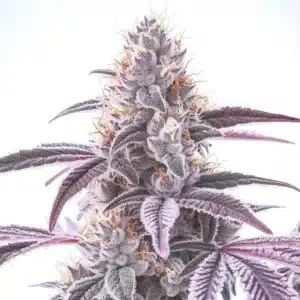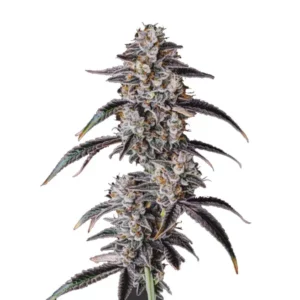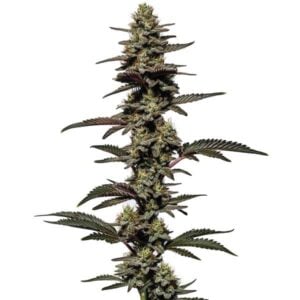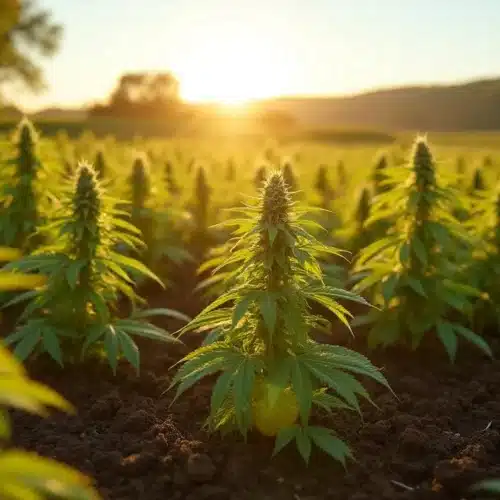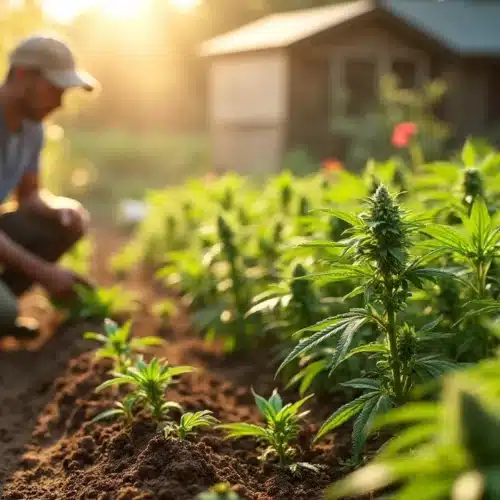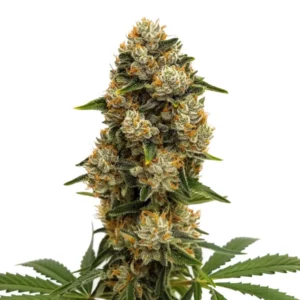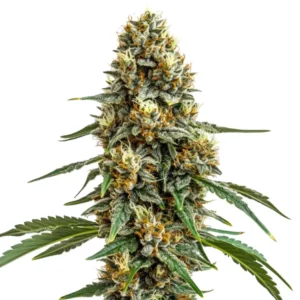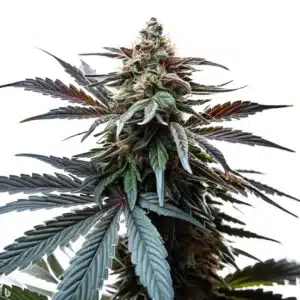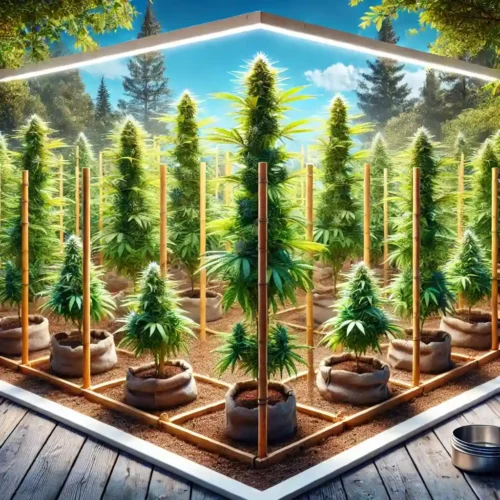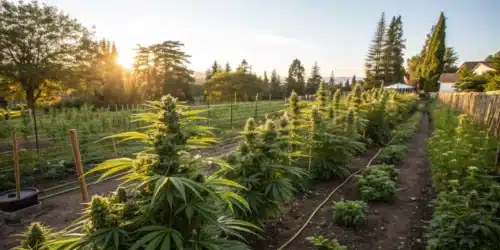When is it too late to plant cannabis outdoors? Many growers find themselves wondering this very question as the warm days slowly fade into a shorter, cooler season. The inquiry “when is it too late to plant cannabis outdoors” resonates with both new enthusiasts and seasoned cultivators who are eager to squeeze every possible harvest out of the remaining growing season. With a mix of professional insight and a lighthearted approach, the following guidance offers practical strategies and tips for navigating the challenges of late-season outdoor cultivation.
As the calendar edges toward the colder months, the central question when is it too late to plant cannabis outdoors becomes even more pressing. A blend of scientific knowledge, real-world experience, and a playful attitude towards the art of growing can transform a seemingly desperate situation into an opportunity for creative cultivation. Growers can modify techniques and adjust strain choices to overcome obstacles, ensuring that every seed has a chance to flourish even in the waning warmth.
When is it too late to plant cannabis outdoors?
Outdoor cannabis cultivation hinges on a delicate balance between seasonal weather patterns and the growth cycle of the plant. Knowing when is it too late to plant cannabis outdoors means understanding the typical outdoor growing season in your region. The process begins with observing local temperature trends, day length, and the timing of the first frost. Experienced growers use these indicators to decide if a late-season planting might still produce a worthwhile yield.
In regions with extended warm periods, growers might push their planting schedule later than expected, but caution is always warranted when asking, “when is it too late to plant cannabis outdoors?” Adaptations such as selecting faster-growing strains or autoflowering varieties help maximize the limited time available. Detailed planning and regular monitoring of weather conditions empower cultivators to make informed decisions that boost the chances of success.
Seasonal Weather and Daylight Considerations
A precise assessment of seasonal weather patterns is key for outdoor cannabis cultivation. Growers must ask themselves when is it too late to plant cannabis outdoors as they evaluate the potential risks of reduced sunlight and falling temperatures. Shorter days mean less energy for photosynthesis, which can stunt growth if the plants are not given enough time to mature. By comparing historical weather data with current trends, growers can better predict the onset of cooler temperatures.
Furthermore, the natural progression of daylight hours plays a significant role in determining the potential success of a late planting. Reliable calendars and local weather forecasts provide valuable insight, helping growers time their plantings to ensure that the plants have enough exposure to sunlight before the drop in temperature. This careful planning often involves asking repeatedly, “when is it too late to plant cannabis outdoors?” as conditions can vary year by year.
Local Climate Nuances and Microclimates
Microclimates and local environmental factors can extend or shorten the outdoor growing season considerably. Gardeners who ask, “when is it too late to plant cannabis outdoors?” often find that sheltered gardens, urban heat islands, or areas with unique geographical features can provide a few extra weeks of growth. In these microclimates, temperature fluctuations are less severe, offering a more forgiving environment for plants planted later in the season.
By taking advantage of these localized conditions, cultivators can sometimes achieve a successful harvest even when the overall season appears to be winding down. Careful site selection, combined with a keen understanding of microclimates, allows growers to harness the full potential of their outdoor spaces, ensuring that the question “when is it too late to plant cannabis outdoors?” is answered with innovative solutions.
Promos & Deals
Risks of Planting Too Late (Low Yield, Frost) and When is it too late to plant cannabis outdoors?
Planting cannabis outdoors too late introduces significant risks that may affect both yield and plant health. Growers who ask, “when is it too late to plant cannabis outdoors?” must account for potential frost, shorter growing periods, and the possibility of insufficient maturation time. Late planting can reduce the size and potency of buds, resulting in a less robust harvest compared to a timely sowing.
A primary concern is the onset of frost, which can damage tender buds and stifle growth. Even a light frost can be detrimental to cannabis plants that are still in the early stages of development. The question of when is it too late to plant cannabis outdoors thus becomes a race against time, with each day of delay increasing the likelihood of encountering these environmental hazards.
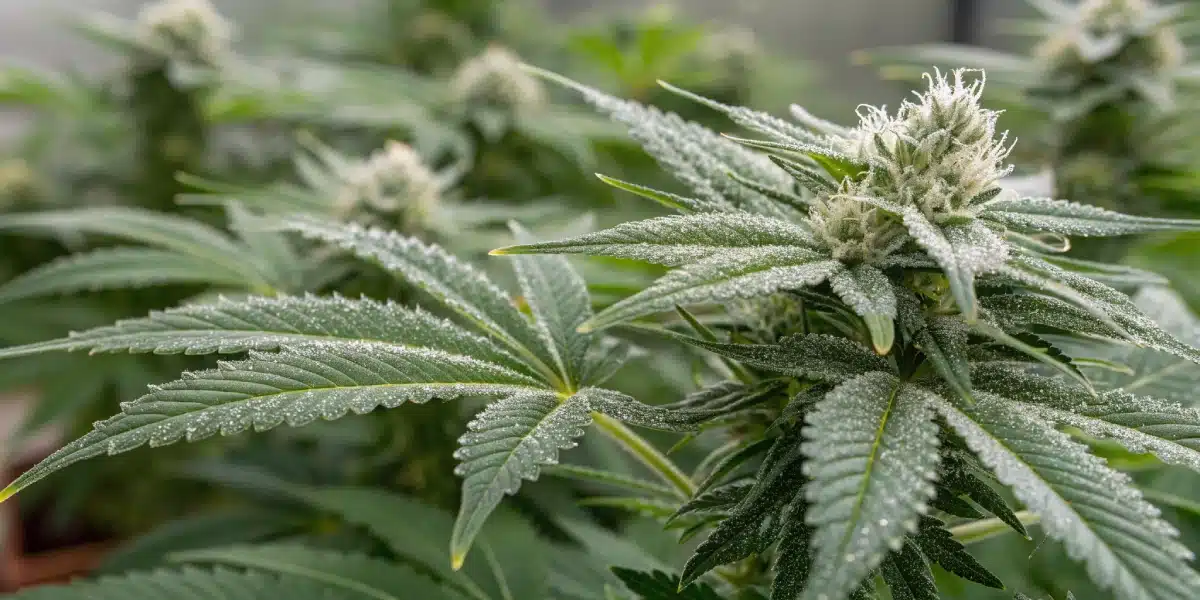
Impact on Yield and Bud Quality
Late planting not only reduces the overall yield but can also affect the quality of the buds produced. When is it too late to plant cannabis outdoors? Growers must factor in that plants have less time to develop a robust structure, resulting in lower resin production and potentially smaller, less aromatic buds. The shorter life cycle may force the plants to focus on survival rather than maximizing yield, thereby reducing the final product’s quality.
Many cultivators report that a late start often leads to a noticeably diminished harvest compared to previous seasons. With limited time for the plants to fully express their genetic potential, the resultant cannabis may have fewer trichomes and a less pronounced terpene profile. This emphasizes the importance of timely planting and careful planning when managing outdoor grows.
Frost and Cold Stress Management
Managing frost risk is a critical aspect for anyone pondering when is it too late to plant cannabis outdoors. Growers can implement several strategies to mitigate the effects of a sudden drop in temperature. Protective coverings, such as frost cloths or temporary greenhouses, offer a buffer against unexpected cold snaps. These interventions help maintain a more consistent microenvironment around the plants.
Additionally, understanding the local climate and potential frost dates enables growers to time their planting more precisely. The persistent inquiry of when is it too late to plant cannabis outdoors drives home the need for proactive measures. By preparing for cold stress, cultivators can extend the growing window and safeguard their investment, even if conditions appear less than ideal.
Tips for a Late-Start Grow (Fast Strains, Autoflowers) for When is it too late to plant cannabis outdoors?
For those still determined to succeed despite a shortened growing season, selecting the right strains becomes paramount. When is it too late to plant cannabis outdoors if the seed variety demands a long maturation period? Growers can turn to fast-growing strains and autoflowering varieties that complete their life cycle in a matter of weeks. These strains are engineered to flower and mature quickly, making them ideal for late-season planting.
Incorporating high-performance genetics and advanced cultivation techniques, many growers find that a well-timed selection of strains can salvage a late planting. When is it too late to plant cannabis outdoors becomes less of a barrier when you opt for robust genetics that thrive in a limited timeframe. Among the many options available, choices such as Blue Dream Seeds or Gorilla Glue 4 Seeds provide a mix of speed and quality that can yield impressive results even under challenging conditions.
Choosing Fast-Maturing and Autoflowering Varieties
A key strategy for late-season growers is to opt for strains known for their rapid development. Autoflowering varieties automatically switch from vegetative growth to flowering, independent of light cycles, making them a perfect choice when time is short. For many, the question remains: when is it too late to plant cannabis outdoors if the strain requires a long flowering period? Autoflowers offer an elegant solution by completing their cycle in as little as eight to ten weeks.
Selecting fast-maturing strains also involves paying close attention to the genetic lineage of the plant. Hybrid varieties that have been bred for quick turnaround can produce resilient plants that handle cooler temperatures well. Incorporating strains such as Granddaddy Purple Seeds into your garden can provide a robust, flavor-rich harvest, even when the window for outdoor cultivation is closing rapidly.
Optimizing Nutrient and Water Schedules
A successful late-start grow demands meticulous care in nutrient management and watering practices. With less time for plants to recover from any stress, growers need to adjust their feeding schedules to ensure that the plants receive optimal nutrition at every stage. This approach minimizes any growth delays and maximizes the plant’s ability to quickly develop strong, healthy foliage.
Efficient water management also plays an important role in preventing stress from environmental factors. In cooler conditions, overwatering can be as harmful as under-watering. Keeping a close watch on moisture levels in the soil, while also monitoring temperature fluctuations, provides the feedback needed to fine-tune care routines. Each decision reinforces the commitment to answering the pressing question: when is it too late to plant cannabis outdoors?
Planning Ahead for Next Season: When is it too late to plant cannabis outdoors?
Forward planning stands as one of the most reliable ways to avoid the pitfalls of a rushed planting schedule. Although many growers face the dilemma of when is it too late to plant cannabis outdoors during the current season, proactive measures can ensure that future seasons yield optimal results. Adjusting your planting calendar, selecting improved strains, and refining cultivation techniques now will pay dividends in upcoming cycles.
Seasonal planning extends beyond just the planting date; it encompasses soil preparation, pest management, and long-term garden design. Many experienced cultivators take the question of when is it too late to plant cannabis outdoors as a lesson in careful scheduling. Learning from each season’s challenges allows for adjustments that lead to healthier plants and more bountiful yields in the future.
Preparing the Soil and Garden Infrastructure
A key component of successful future planting is ensuring that the soil and garden environment are primed for growth. When is it too late to plant cannabis outdoors becomes less of an issue if you invest time in amending the soil, installing proper drainage, and establishing protective barriers against pests. Routine maintenance, such as composting and mulching, enhances soil fertility and helps buffer against temperature extremes.
By preparing the garden infrastructure well in advance, cultivators create a foundation that supports vigorous growth regardless of a slightly delayed start. This foresight transforms potential setbacks into manageable adjustments, ensuring that your outdoor grow setup is resilient and efficient year after year.

Refining Cultivation Techniques and Scheduling
Learning from previous experiences and incorporating new cultivation techniques can significantly improve the chances of a successful harvest. Growers who are mindful of when is it too late to plant cannabis outdoors may find that fine-tuning their scheduling, from seed germination to harvesting, makes all the difference. Detailed records and careful observation help identify what worked well and what could be improved.
Implementing controlled environments for critical growth phases, such as early flowering, can extend the effective growing period. By experimenting with supplemental lighting or temporary high tunnels, even a late start can be offset by enhanced growth conditions. Each adaptation reflects a commitment to innovation and flexibility in the face of seasonal challenges.
Faqs
What factors determine when is it too late to plant cannabis outdoors?
Weather conditions, local frost dates, and the specific genetics of the chosen strain are among the primary factors. Growers must monitor temperature trends, daylight duration, and soil conditions to decide if a late planting can still yield viable plants. Even if the window seems narrow, carefully selecting fast-growing or autoflowering strains can make a significant difference.
How can I extend the outdoor growing season when questioning when is it too late to plant cannabis outdoors?
Using protective covers, high tunnels, or even simple frost cloths can create a microenvironment that extends the growing season. Additionally, choosing strains that mature quickly and adjusting nutrient schedules are effective strategies. These techniques help mitigate risks and ensure that even a delayed start can result in a rewarding harvest.
Are there any specific strains recommended for late planting when is it too late to plant cannabis outdoors?
Yes, strains with rapid growth cycles and autoflowering traits are highly recommended. Selecting genetics known for their resilience under shorter growing seasons, such as varieties similar to Blue Dream Seeds, Gorilla Glue 4 Seeds, or Granddaddy Purple Seeds, can provide a better chance for success. These strains adapt well to late planting conditions, offering robust yields even in challenging climates.
By taking proactive measures and continually questioning when is it too late to plant cannabis outdoors, cultivators set themselves up for future success. Strategic planning, combined with a playful yet professional approach to problem-solving, ensures that each growing season is an opportunity for learning and improvement. Whether you are a seasoned expert or a curious newcomer, adapting to the changing seasons with confidence and creativity is the key to a bountiful outdoor cannabis garden.


